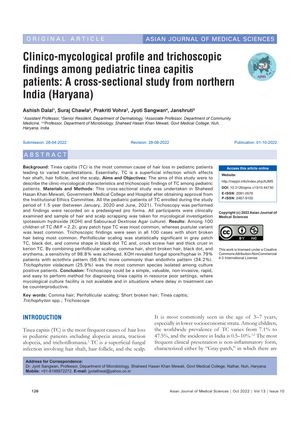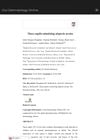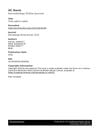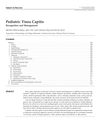Clinico-Mycological Profile and Trichoscopic Findings Among Pediatric Tinea Capitis Patients: A Cross-Sectional Study from Northern India
October 2022
in “
Asian journal of medical sciences
”

TLDR Trichoscopy is a valuable, quick, and non-invasive tool for diagnosing tinea capitis in children.
This cross-sectional study conducted in northern India examined 100 pediatric patients with tinea capitis (TC) to describe their clinic-mycological characteristics and trichoscopic findings. The study found that the gray patch type of TC was the most common, while the pustular variant was the least common. Trichoscopic examination revealed short broken hair as the most frequent finding, with perifollicular scaling, black dots, and comma-shaped hairs being significant indicators for different TC types. The study achieved a diagnostic sensitivity of 98.8% by combining various trichoscopic features. Fungal spores or hyphae were detected in 79% of patients using potassium hydroxide (KOH) tests, with the ectothrix pattern being more common than the endothrix pattern. Trichophyton violaceum was the most frequently isolated species. The study concluded that trichoscopy is a valuable, non-invasive, and rapid diagnostic tool for TC, especially in resource-limited settings.


